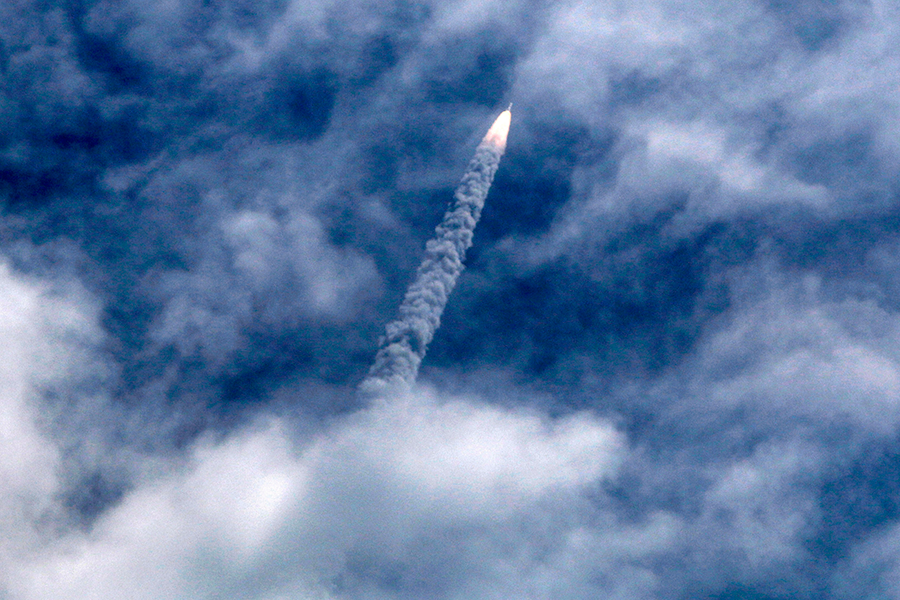How India is quietly becoming a space exploration power house
Loading...
India successfully launched a prototype space shuttle on May 23; a mini, unmanned space vehicle called the Reusable Launch Vehicle-Technology Demonstrator. The shuttle traveled to an altitude of about 40 miles above Earth's surface, short of the 62-mile barrier between Earth's atmosphere and outer space, before returning to Earth and into the Bay of Bengal.
"In this flight, critical technologies such as autonomous navigation, guidance and control, reusable thermal-protection system, and re-entry mission management have been successfully validated," officials from the country's space agency, the Indian Space Research Organisation (ISRO), reported in an announcement Monday.
The space vehicle launch officially entered the country into the global race to develop a low-cost, reusable space shuttle, a feat considered critical to the feasibility of future space exploration. It also marks yet another recent milestone of India's burgeoning space program, securing the south Asian country's spot among the world's space exploration superpowers.
"They're not at the level of the Big 4, but they’re pretty darn good," Jonathan McDowell, an astronomer at the Harvard-Smithsonian Center for Astrophysics, tells The Christian Science Monitor, referencing the world's top four agencies for innovation in space-related technologies: United States, Russia, China, and Europe. The US remains the only country to have sent humans beyond low-Earth orbit to the moon.
He places India in the second tier of space explorers, just behind Japan, a space innovation power and major NASA partner on robotic Mars missions and running of the International Space Station, a science lab orbiting Earth. All other countries are far behind, says Dr. McDowell. These leading space agencies have their own rockets to launch space shuttles, build their own satellites, and are capable of interplanetary flight, he says.
"They have the ambitions and certainly the capability if they put in the money," says McDowell.
Despite ISRO's budget of about $1 billion – 5 percent of NASA's $17.6-billion annual budget – the thrifty agency has unleashed a series of planetary accomplishments in recent years.
In September 2015, it became the first developing country to launch a space-exploration observatory, called Astrosat. It is one-tenth the size of NASA's prodigious Hubble telescope. ISRO had already sent a probe to explore the moon's surface from orbit in 2008, joining an elite club.
Perhaps most strikingly in recent history – and a feat that put India on the space map for casual space observers – was its successful launch in September 2014 of an orbiter to Mars, called Mangalyaan, which is studying the planet's atmosphere.
This made ISRO the fourth agency, after those of the United States, the Soviet Union and European, to reach the Red Planet. And it spent only $75 million to do it, 11 percent of what NASA spent on a similar mission called Maven, as The New York Times reported.
"We have dared to reach out into the unknown and have achieved the near impossible," India's Prime Minister Narendra Modi said of Mangalyaan last year, as the Monitor reported.
The reusable launch vehicle tested on Sunday cost ISRO about $14 million. It will provide lessons to the agency on navigation systems, how the vehicle's materials will handle hypersonic speeds, and atmospheric re-entry. India's competitors still have some time to perfect their reusable launch vehicles, though. ISRO is about 15 years away from a fully functioning one, as Smithsonian.com reported.









